Harlan Ellison died today. He had written long ago
that he wanted his epitaph to be “For a brief time I was here, and for a brief time, I mattered.” And matter he did. I’m
probably not alone when I say I would not be the writer I am today if it were
not for Harlan Ellison.
And of course, there were the TV shows. Although
Harlan was never pleased with their final results once all the diverse hands in
their production had left their marks, he gave us “The City on the Edge of
Forever” - the single best episode of Star
Trek ever written; ; “Soldier” and “Demon with a Glass Hand” for The Outer Limits, and the TV series The Starlost, the final result of which Harlan hated yet one I enjoyed watching at the time; as well as episodes of Voyage
to the Bottom of the Sea, The Man from U.N.C.L.E., Route 66, The Alfred
Hitchcock Hour, and The Flying Nun.
Harlan was one of the New Wave of science fiction
writers -- he bristled at being called a science fiction writer and would
always insist he wrote speculative fiction instead – such as Joe Haldeman, Ursula K. Le Guin, Samuel “Chip” Delaney,
Philip K. Dick, Michael Moorcock, Theodore Sturgeon and many others who were
determined to take the staid space opera we had grown up with to the next
level. Harlan helped them do that by editing and publishing a phenomenal
anthology of New Wave speculative fiction entitled Dangerous Visions. He followed up with an even more massive, two-volume
anthology entitled Again Dangerous
Visions. He promised, but never delivered, a final volume The Last Dangerous Visions, A sore point
for him and others as he had collected first publication rights from many
authors for their stories which languished because the volume never saw print.
I was 15 when I read Dangerous Visions but it changed the way I thought about writing. Harlan
had told his contributors to send him
the stories other publishers thought too controversial to publish. It was a
permission slip to explore the outer limits of the writers’ creativity unbound
by the stifling voices of the editors and publishers in their Brooks Brothers
suits in offices in Manhattan skyscrapers who self-assuredly deigned themselves
the arbiters of what was or was not good writing. But at 15, it was a lightning
bolt charging me with an entirely new form of creative stimulus to push the
envelope as Harlan had, as these other New Wave writers had, to boldly go where
no author had gone before. Controversy was to be embraced, not eschewed. Writing
technique was fluid and an art form itself. Decades later, I published my own
attempt at speculative fiction that pushed the boundaries, Shards: The Omnibus Edition. At 750 pages, it was even more massive
than Dangerous Visions but before any
of the short stories, on the acknowledgments page, I gave special thanks to
Harlan Ellison for blazing the trail for myself and all the other writers like
me who would also take his permission slip and run with it.
As all writers know, all good stories are about the
human condition. Harlan understood the human condition because he had lived it.
He described some of the odd jobs he had taken while traveling around the country:
cab driver, short-order cook, door-to-door salesman, circus hand, crop-picker, dockworker,
tuna fisherman, and even a stint as a truck driver… hauling nitroglycerin. At
one point, he even joined a street gang as research for his 1958 novel Rumble (republished as Web of the City).
Harlan was
brash and unapologetic. He routinely criticized the television industry as he
was writing for it; if he didn’t like what the producers had done to his script
he always exercised his contract clause to have his screen credits listed not
under his own name but as Cordwainer Bird – as in this is for the birds. He was
a champion of creators’ rights as well as human rights. His youthful arrogance
and creativity were a wonder to behold, especially when on view during his
frequent appearances on the exceptional Tom Snyder’s The Tomorrow Show. The 5’2 writer stood up to a bullying Frank
Sinatra one evening in a Beverly Hills nightclub, as recounted in Gay
Talese’s spellbinding Esquire article “Frank Sinatra Has a Cold.”
Then there are the tales, apocryphal yet most likely true, of Ellison mailing a
dead gopher to a publisher who had breached a clause in their contract by
printing a cigarette ad in one of his books; and his expulsion from college for
his response to an English professor who had criticized his writing. Harlan described
that experience:
“There was an English professor named Shedd at Ohio State University in 1954. He told me I had no talent, could not write, ought to forget ever trying to make a living from the craft of writing, and that even if I did manage to eke out some sort of low-level existence through dint of sheer, dogged persistence, I would never write anything of consequence, would never make a name for myself, and would sink into the dust of oblivion justifiably forgotten by lovers of properly constructed literature. I told him to go fuck himself.”
Starting
in junior high, I tried to buy everything Harlan Ellison wrote; I got a lot of
his books over the following decades, but not all. I don’t know of anyone who
could keep up with such a prolific output. I can only think of two men who
might own Harlan’s complete works – and I envy them for that – Ellison himself,
of course, and Dr. Shedd. You see, Harlan sent every single published story to
Dr. Shedd at Ohio State. As he put it, “One should never say ‘fuck you’ unless
one is prepared to back it up.”
By 2001, Harlan had written or edited 75 books; had
more than 1,700 short stories published in magazines, newspaper columns, and
articles; and authored more than three dozen award-winning films and TV
scripts. He was nominated for Emmys and Grammys; won P.E.N.‘s Silver Pen for
journalism; and won more awards for imaginative literature than any other contemporary
author. He was called “one of the great living American short story writers” by The Washington Post and “the 20th century Lewis Carroll”
by The Los Angeles Times.
Harlan had an attitude: he was a short, Jewish kid
from Cleveland and he wasn’t about to take crap from anyone. I can relate. But
despite his reputation he was a wonderful man, and undeniably one of unique talent and fecundity. Somewhere, as a
teenager, I had read Harlan’s account of meeting his idol, renowned science
fiction writer Isaac Asimov. He wrote of coming up to him at a public
appearance (perhaps a book signing?) and rogitating in an effusive tone, “Are you really Isaac Asimov?” so
much that Asimov blushed and finally admitted
he was; at which point Harlan replied, “Eh, you’re not so impressive in person”
(or words to that effect). It was a great conversation starter and the two
later became the best of friends. With that in mind, when I first met Harlan I
asked him when he would be publishing The
Last Dangerous Visions, a question tantamount to waving a red flag at a bull.
He perused my countenance to discern what sort of alleged fan would have the
chutzpah to bring up That Which May Not Be Mentioned and, noting my grin,
smiled himself and replied, “Aw, go fuck yourself.” We then spoke for another 25
minutes and he revealed himself to be a down-to-earth, humanistic man. But I’ve
always treasured being able to say those were the first words I was able to
elicit from Harlan Ellison: not a mundane “hello” or a prosaic “nice to meet
you;” I had provoked the quintessential Ellison and somewhere from beyond the
grave Isaac Asimov chuckled.
Harlan autographed a copy of his book The Essential Ellison (a 35-year
retrospective of his work) which I treasure almost as much as the book that
sits beside it, a well-worn copy of
Dangerous Visions signed by Harlan and many of the book’s authors, the book
that launched my passion for writing short stories. Harlan later published an
updated version The Essential Ellison
that encompassed stories representing his 50 years as an author. Reading the
latter edition in chronological order, one goes through the three stages of
Ellison. He bravely includes his first stories written as a teenager and I read
them thinking they reminded me of my teenage attempts and how my writing was so
much better than this. In the second stage he had clearly mastered his craft,
and I thought this is much more like my writing. But then I reached the third
stage: Ellison’s later work -- his apotheosis as a writer. “Oh my god!” I
whispered softly after each tale, realizing they had been constructed at a
level far beyond any I had reached, and possibly beyond my reach. The author
had reached the pinnacle of his career and from Mount Kilimanjaro was looking
down to see if we readers/writers could make the climb.
Harlan Jay Ellison was born in Cleveland on May 27,
1934. He died on June 28, 2018 at his Los Angeles home in his sleep, presumably dreaming of still more creative thoughts
and stories, his last dangerous visions.
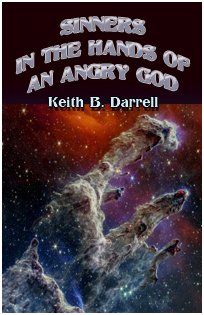
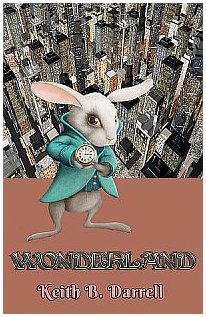
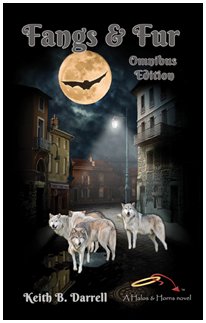
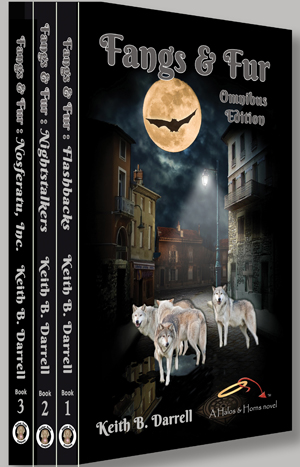
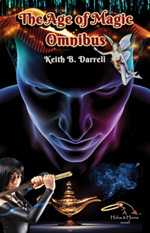
No comments:
Post a Comment